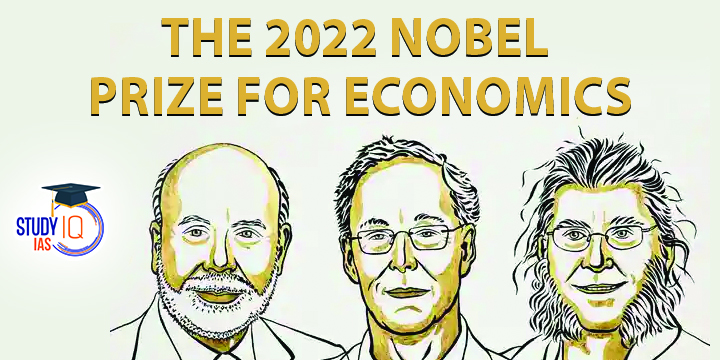Table of Contents
Nobel Prize for Economics: Major Highlights of their Research
What was the topic of their research?
Nobel Prize for Economics: Their research dates to the early 1980s and was mainly focused on “the role of banks in the economy, particularly during financial crises.”
Ben S Bernanke who win Nobel Prize for Economics mainly examined the role of bank collapses in the Great Depression of the 1930s.
Diamond and Dybvig developed a theoretical model that explains how banks create liquidity for savers through a concept called ‘maturity transformation’.
Significance of their research
Understanding of banking system: Their research has helped us in understanding some of the fundamental aspects banking system such as the role of banks in society, their operating mechanism, their vulnerability to collapse and dealing with bank collapses etc.
Banking regulation: Their insights on vulnerabilities of banking system have laid the foundation for modern day banking regulation frameworks.
Averting financial crisis: Their research has provided some crucial inputs for the economic policies during the 2008 global financial crisis and also helped during 2020 global pandemic and ensured the later crisis did not develop into a new depression.
Nobel Prize for Economics: The Work of Ben S Bernanke
- He published an article in 1983, which analyzed the Great Depression of the 1930s.
- Until Bernanke’s paper, bank failures were seen as a “consequence” of the financial crisis. But he proved it was exactly the opposite— bank failures were the “cause” of the financial crisis.
Nobel Prize for Economics 2022: The Work of Douglas W Diamond and Philip H Dybvig
- They published a research paper in 1983 in which they tried to explain the working of banks by addressing a fundamental conflict between the needs of savers and investors.
- They explained that banks are able to resolve this conflict through the process of maturity transformation.
Nobel Prize for Economics: The Conflict between the Needs of Savers and Investors
- Savers always want access to at least some part of their savings for unexpected use.
- The borrowers, especially those taking out a loan for building a home or building a road, need the money for a much longer time. Borrowers cannot function if the money can be demanded back at a short notice.
The Great Depression of 1930s
- The Great Depression was a severe worldwide economic depression between 1929 and 1939 that began after a major fall in stock prices in the United States.
- Between 1929 and 1932, worldwide gross domestic product (GDP) fell by an estimated 15%.
- Devastating effects were seen in both rich and poor countries with falling personal income, prices, tax revenues, profits and prices. International trade fell by more than 50%, unemployment in the U.S. rose to 23% and in some countries rose as high as 33%.
- Cities around the world were hit hard, especially those dependent on heavy industry. Construction was virtually halted in many countries. Farming communities and rural areas suffered as crop prices fell by about 60%.


 Micrometeoroids: Tiny Space Particles, M...
Micrometeoroids: Tiny Space Particles, M...
 India Needs a National Insolvency Tribun...
India Needs a National Insolvency Tribun...
 Unlocking the Potential of India–Afric...
Unlocking the Potential of India–Afric...

























